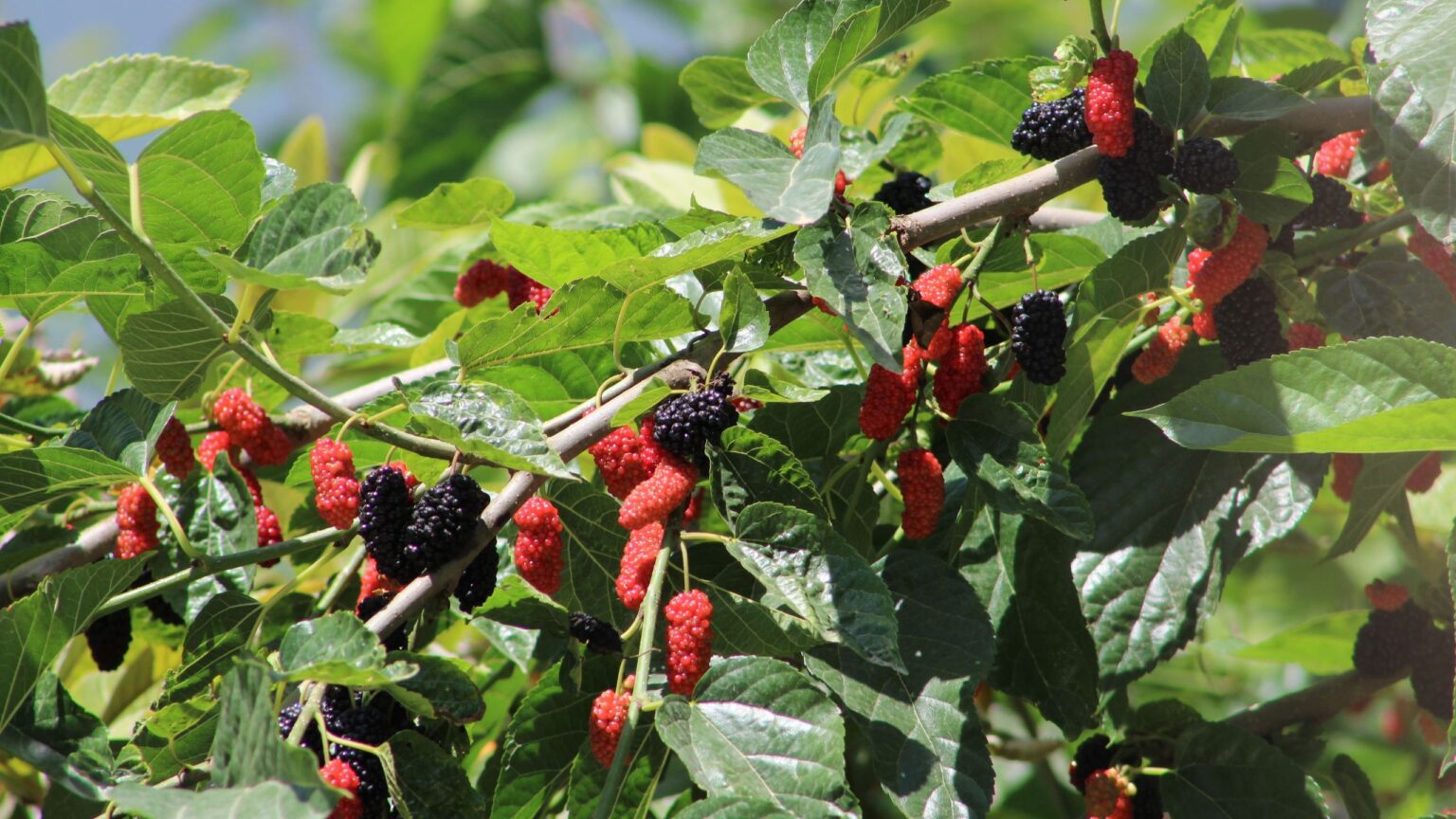Mulberries are one of those underrated fruit trees that make a valuable addition to any garden – and better yet, learning how to grow mulberries is a piece of cake.
If you’re looking to buy a fruit tree this year, it’s worth considering a mulberry tree – the harvests are delicious (lots of people say the taste lands somewhere between a blackberry and a fig), and they make striking centrepieces in the garden.
I’ve thrown together a complete guide to growing mulberries, with notes on planting, pruning, and when to expect the first fruits (spoiler: you’ll need to be patient!).
What you’ll need
1. Position
Working out the best place to plant fruit trees is half the battle, and for long-lived trees like mulberries, getting it right is all the more important.
To track down the perfect planting spot, I spoke to Ian Hunt, head gardener at the National Trust’s Hardwick Hall in Derbyshire, which has a small avenue of ten black mulberries in the southeast corner of the garden. Half were planted in the early 1970s, and the other half were planted in the late 1980s.
Ian says black mulberries (the most commonly grown type) are best suited to medium-sized gardens, as many varieties have a height and spread of around 12 metres. You can buy compact fruit trees for smaller gardens and patios, though, like Dwarf Mulberry ‘Mojo Berry’ from Crocus.
Luckily, mulberries are fairly unfussy about soil – just try to avoid particularly wet, heavy ground where you can, and choose a sunny but sheltered spot. Fallen fruits can stain the ground, too, so it’s worth steering clear of areas where the branches will ultimately overhang a patio or garden path.
‘The black mulberry is not a difficult tree to grow,’ Ian says. ‘It is fully hardy and can be grown in most soil types.’
2. Planting
As luck would have it, late autumn is the ideal time to plant fruit trees, and the same goes for mulberries – it gives the roots plenty of time to establish before the start of the next growing season.
If there’s one thing you should take away from this guide, it’s mulching: it’s a game-changer when learning how to grow mulberries.
‘Plant mulberries in a hole twice the size of the root ball and apply a mulch to stop it from drying out,’ says Bowood House and Gardens’s head gardener, David Glass. RocketGro Organic Magic Mulch from Amazon is a top-rated, peat-free choice.
Most mulberry trees are self-fertile, too, so they’ll produce fruit as a standalone in the garden.
3. Watering
Like other fruit trees and shrubs, mulberries will need regular watering while they’re settling into your garden.
‘When you first plant your mulberry into the ground, water it between three to four times a week, depending on the weather, for the first couple of months,’ advises Lucie Bradley, gardening and greenhouse expert at Easy Garden Irrigation.
Mulching, as David mentioned previously, will keep as much moisture in the soil as possible. You can even buy composts with water-locking technology, like Miracle-Gro’s Peat Free Premium All Purpose Compost from Amazon.
‘Keep the plant well-watered throughout the first year, especially during droughts,’ David adds.
4. Feeding
You won’t even need to feed your mulberry tree, really – especially if you apply a fresh layer of organic matter like compost around the base of the trunk every spring.
‘If you have concerns about the levels of nutrients in your soil, then you can use a balanced fertiliser, ideally in early spring, applying under the canopy of the tree,’ says Lucie. ‘But avoid using it directly against the trunk, as this can cause root burn – and also, most of the feeder roots are not close to the trunk of the mulberry.’
Mulberries in containers will benefit from feeding during the growing season. Try something like Maxicrop All Purpose Organic Garden Natural Fertiliser from Amazon, which encourages heavier yields.
5. Pruning
When I said learning to grow mulberries is a piece of cake, I wasn’t joking – a lot of fruit trees can be pruned for a better harvest, but mulberries do just fine on their own.
‘Apart from the removal of any dead or diseased wood, they require little or no pruning unless problems with crossing or rubbing branches occur,’ Hardwick Hall’s Ian explains.
6. When to expect fruit
Black mulberries are slow burners, and the fruits can take a fair few years to appear.
‘The black mulberry is relatively slow-growing,’ says Ian. ‘Like most fruiting trees, it will take at least five years to reach fruiting size.’
Smaller varieties, though, can start cropping in a fraction of that time. When they do start to fruit, you can expect to pick the berries in August and September – but they can stain, so it’s worth wearing some garden gloves while harvesting.
Mulberries are generally disease-free, and the only real threats to established trees are birds – they’ll nab a few fruits for themselves – but usually, there are still plenty of berries to go around.
So, that solves it: mulberries are one of the easiest fruit trees to grow, and they’ll stand tall in your garden for years and years to come.
Read the full article here

